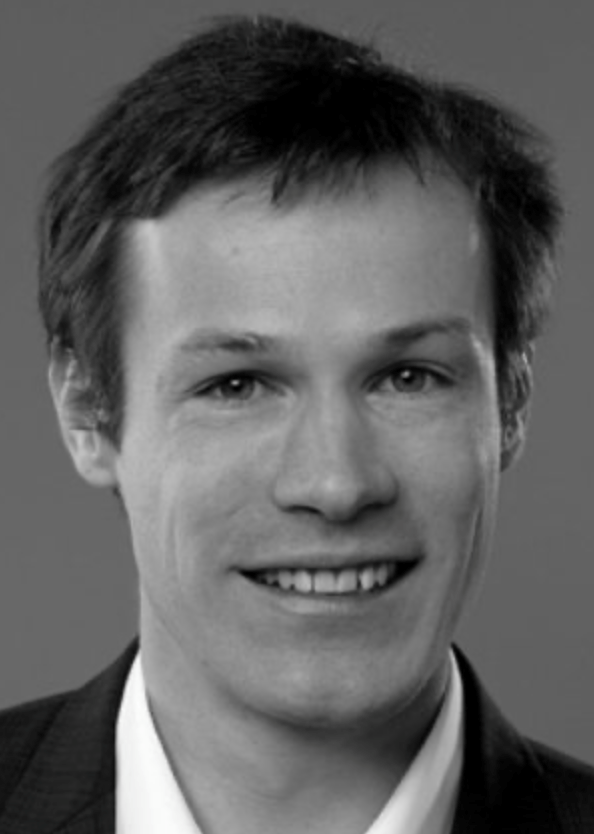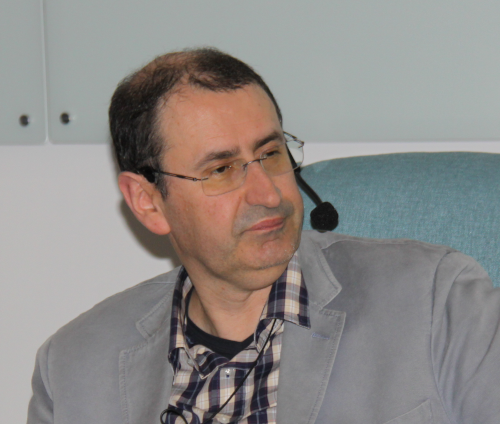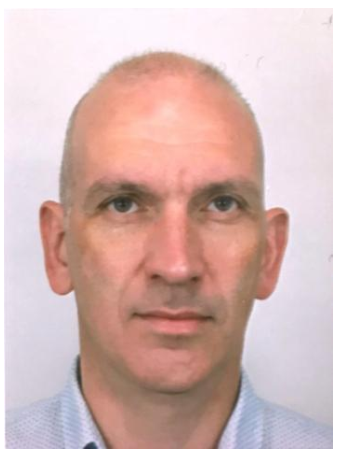MATILDA "5G & Beyond" Workshop

MATILDA – Autonomic Deployment and Lifecycle Management of 5G & Beyond Services
Organizers: Franco Davoli, University of Genoa and CNIT S2N National
Lab, Italy; and Tarik Taleb, Aalto University and University of Oulu,
Finland
Workshop Co-Chairs: Chiara Lombardo, CNIT, Italy; Panagiotis Gouvas, Ubitech, Greece; Anastasios Zafeiropoulos, Ubitech, Greece
This MATILDA Workshop was originally proposed and accepted to be held in conjunction with the 6G Wireless Summit, and was planned to be held in Levi, Finland, on March 20, 2020. Owing to the Covid-19 outbreak, all Tutorials and Workshops scheduled on March 19 and 20 were cancelled, and eventually the 6G Wireless Summit itself was transformed into a virtual event.
As organizers of the Workshop on behalf of the MATILDA project we decided to follow a similar path, though with some variation. We have asked our invited speakers to provide a pre-recorded presentation. All presentations that we received have been uploaded to this website and can be found below.
During the month of May, an online discussion on the virtual Workshop topics will be organized. The date will be announced as soon as possible.
Webinar registration
We cordially invite interested participants to register for the webinar, where the topics explained in the presentations by the experts will be discussed no later than 20th of June using this link.
The webinar will be held on the 30th of June at 5:00 pm CEST. Access to the webinar will be shared only with the registered participants.
Description
The goal of the Workshop is to present the main assets and business models for the whole MATILDA solution and its vertical demonstrators and the potential of their evolution toward 6G, where, by mapping application requirements to network slice configuration and allowing fast dynamic adaptation of resources, it may contribute to empower European SMEs and other stakeholders in the development of more efficient 5/6G-aware applications and foster innovative vertical industries.
The Workshop will include presentations on the MATILDA assets from
Consortium partners and will also welcome invited speakers from academia
and the industrial sector, from application developers to Telco Service
Providers, possibly followed by a panel discussion. Presentations will
be upon invitation only.
Background
The integration of vertical industries in the design of the
fifth-generation (5G) mobile networks is seen as a cardinal facet to
support the introduction of digital technologies in economic and
societal processes and open truly global markets for innovative digital
business models, leading to the fourth industrial revolution. For this
reason, the demands of industrial stakeholders acting at different
levels, from application/service developers to telecom/cloud
infrastructure providers, should be considered as high-priority drivers
of 5G networks design by involving them in the 5G ecosystem since the
beginning and preparing them to the further forthcoming Beyond-5G
evolution (6G).
Challenges
The MATILDA Project targets a coordinated, highly dynamic and fully automated control of all the resources/services at any layer to enable verticals autonomically deploying and managing the lifecycle of their 5G-ready applications in a multi-tenant/domain ecosystem. This holistic approach will not only empower application developers by providing them with the appropriate tools to lower the barriers for creating 5/6G-ready applications, but it will also significantly contribute to bridge the gap between the verticals and the underlying cloud/edge network: by leveraging on the “softwarization” process, network operators’ infrastructures will be transformed into distributed datacenters with advanced virtualization, software-driven capabilities, and Mobile Edge Computing (MEC) support, shifting the role of telecommunication service providers in the Information and Communication Technology value chain.
The new KPIs imposed by the evolution beyond 5G impose improvement
not only in the wireless segment, but also in providing a more strongly
integrated and convergent networking environment, capable of unleashing
the potentiality offered by extremely high-speed, short-range and
ubiquitous access. This new ecosystem needs extremely flexible,
programmable and dynamically adjustable allocation of networking
resources, spanning from the MEC to the cloud environment. Improvements
are needed in the architectural framework, but also in management and
control strategies targeting both unprecedented performance requirements
and energy efficiency, without increasing the operational burden of the
network and infrastructure service providers.
Program
- Panagiotis Gouvas, Ubitech, Greece
Deploying and orchestrating modern cloud-native applications in the programmable 5G infrastructure watch presentation
- Jaafar Elmirghani, University of Leeds, UK
Network Intelligence and Energy Efficient Resources Provisioning in 6G watch presentation
- Ingrid Moerman, IMEC - Ghent University
How ORCA solutions meet beyond-5G evolution watch presentation
- Antonio Manzalini, TIM (Chief Innovation & Partnership Office / Technology Innovation)
Pervasive Artificial Intelligence in 5G and beyond scenarios watch presentation
- Luka Koršič, Internet Institute Ltd., Ljubljana, Slovenia
Next Generation Public Protection and Disaster Relief Systems watch presentation
- Sławomir Kukliński, R&D Expert, Orange Labs Polska
Carrier-grade scalable architecture for network slicing watch presentation
- Kay Burow, BIBA, Germany
Towards Flexible Production Systems – Chances and Limits by using Cellular Networks watch presentation
- Rui Aguiar, University of Aveiro, Portugal
On the network of control watch presentation
- Artur Hecker, Director of Future Network
Technologies at Huawei MRC, Munich – Associate Professor, Telecom ParisTech, France
From 5G Slicing to fine-granular, autonomic resource management watch presentation
- Miloud Bagaa, Aalto University, Finland
High Resolution Media on Demand Vertical watch presentation
Workshop Speakers
Panagiotis GouvasUbitech, Greece Talk title: Deploying and orchestrating modern cloud-native applications in the programmable 5G infrastructure watch presentation |

|
Jaafar ElmirghaniUniversity of Leeds, UK Talk title: Network Intelligence and Energy Efficient Resources Provisioning in 6G watch presentationTalk abstract:Network intelligence is starting to enable unprecedented levels of flexibility, adaptation and efficient resource utilization in communication networks. It can also enable optimized user centric services by learning not only about the network, but also about the user. The added network intelligence has implications however in terms of power consumption in future 6G networks and beyond. This talk draws on the work carried out in the EPSRC Intelligent Energy Aware Networks (INTERNET) project and the EPSRC Terabit Optical Wireless Systems for 6G (TOWS) project. In particular, it casts the problem of energy efficient resource provisioning in 6G into an optimization framework considering wireless and access networks, IoT networks, core networks and data centre networks. For example, attention is given to the use of machine learning algorithms and their use to understand the user instantaneous requirements as well as the network conditions, thus matching the two in a healthcare application. Attention is also given to energy efficient network slicing and virtual machine placement in cloud - mobile edge computing architectures. Energy efficiency in a service oriented IoT framework is presented together with energy efficient future data centre disaggregation. Test-bed implementations are outlined and Future directions are proposed. |

|
Ingrid Moermanimec - Ghent University Talk title: How ORCA solutions meet beyond-5G evolution watch presentationTalk abstract:The H2020 ORCA project (https://www.orca-project.eu) offers
experimentation facilities to promote wireless innovation especially
focusing on SDR. The goal of the ORCA project is to enable wireless
experimenters to unlock the potential of reconfigurable radio
technology, by setting up complex experiments that require control of
multiple novel technologies or cooperation between multiple networked
SDR platforms with 5G or beyond 5G performance constraints on latency or
throughput, well before new radio technologies become available on the
market in commercial off-the-shelf products. The ORCA project further
aims to bridge Software-Defined Radio (SDR) with Software-Defined
Networking (SDN) technology, enabling the creation of parallel on demand
wireless network slices, each slice optimized for a specific set of
requirements. |

|
Antonio ManzaliniTIM (Chief Innovation & Partnership Office / Technology Innovation) Talk title: Pervasive Artificial Intelligence in 5G and beyond scenarios watch presentationTalk abstract:MEC/Edge Computing aims at allocating part of the service-specific processing and data storage from the Cloud computing to the edge nodes. Among the expected benefits of EC deployment in 5G, there are: performance improvements, traffic optimization and new ultra-low-latency services. At the same time, in 5G we are witnessing a growing development of AI (Artificial Intelligence) for a wide spectrum of applications, such as: intelligent personal assistants, video/audio surveillance, smart cities’ applications, self-driving, Industry 4.0. The requirements of these applications seem calling an AI’s resources-hungry model, whose cloud-centric execution appears in the opposite direction with a migration of computing, storage and networking resources at the edge. In reality, the two technology trends are crossing in the EI (Edge intelligence): an emerging paradigm meeting the challenging requirements of future pervasive services scenarios, also beyond 5G, where optical-radio networks requires automatic real-time joint optimization of heterogeneous resources, high dimensional fast configurations (e.g., selecting and combining optimum network functions and inference techniques) and autonomic/cognitive operations. |

|
Luka KoršičInternet Institute Ltd., Ljubljana, Slovenia Talk title: Next Generation Public Protection and Disaster Relief Systems watch presentationTalk abstract:Public Protection and Disaster Relief Systems (PPDR) require applications and services to operate reliably and with high survivability and availability characteristics. For such features, support of high-performance communications with added service provisioning intelligence is required in both normal day-to-day conditions and in extreme situations since the provided emergency applications are executed in a distributed system with distributed service intelligence. This presents complex requirements for service provisioning on top of a next generation telecom and cloud infrastructure. With MATILDA-based framework that allows distributed cloud and network services deployment, the use case for next generation PPDR systems can show, how cloud-based PPDR services providing real time emergency intervention monitoring and critical infrastructure protection can benefit with orchestrated deployment. Furthermore, such critical services would require powerful SLS/SLA monitoring, which can be enabled with qMON performance monitoring engine deployed along with application services in NFV OSM-compliant environment. |

|
Sławomir KuklińskiR&D Expert, Orange Labs Polska Talk title: Carrier-grade scalable architecture for network slicing watch presentationTalk abstract:In the era of virtualization, the network and service management has to be redefined. A new decomposition introduced by MANO introduces the separation of orchestration from classical management functions. Moreover, due to the functional separation of the infrastructure and virtualization, the orchestration and management of slices or services do not have to cope with hardware. The network slicing approach (based on MANO) enables dynamic creation of multiple network slice instances (i.e. logical networks) that can be created for the needs of specific services or verticals. The services may have a different lifetime than network slice instances. Moreover, in some cases, the verticals should see their network slices as their ‘private’ networks and therefore, they need a management interface in order to customize the slices and services attached to them. The new situation calls for a specific approach to network/service management that can provide appropriate functionalities, performance and scalability. The proposed by ETSI MANO approach is centralized, and its operations are driven by single OSS/BSS. The approach raises scalability issues, moreover using a single OSS/BSS for multiple, by definition ‘isolated’ network slices seems to be not appropriate. In the talk, a concept of embedded (in opposite to external) slice/service management that is based on the autonomic/cognitive network management paradigm will be outlined. In the concept there have been introduced multiple orchestration domains, each virtual function has its embedded management component, each slice (or service) has its embedded manager that provides a simple, intent-based management interface to slice tenant and the inter-domain management and operations are handled by dedicated entities. Moreover, management functions can be dynamically upgraded. The described framework is ready for federated AI operations. |

|
Kay BurowBIBA, Germany Talk title: Towards Flexible Production Systems – Chances and Limits by using Cellular Networks watch presentationTalk abstract:During the last years, a change occurred in the industrial environment. Topics like Industry 4.0, Digital Twins, 5G, Cloud Services and as an incremental part of it, Everything-as-a-Service are phrases which can be heard very often in this context. However, with new ideas, new challenges arise. Concerning the Industry 4.0 by reducing it here to logistics and production, an overview of existing limits in actual industrial scenarios will be shown. Also, the demands that are coming from industry stakeholders and their clients for future applications and products. As part of the MATILDA project, the two use cases will be introduced towards 5G-ready applications; one has its focus on logistics, the other one in production. Both use cases in MATILDA were designed to consider future industrial problems/interests and were scaled to the very base to examine the essential issues and differ in their requirements. In the logistics scenario, the main assets are collecting data in almost real-time and store them online in a database. The challenge here is to provide automated services of interconnected facilities and factories with high reliability and availability to deliver the data at all time for higher flexibility and transparency. Further, low power consumption as a critical aspect to extend the lifetime of simple Internet of Things (IoT) components. In the production scenario, the main asset lies in human-robot-collaboration (HRC). For the interplay between robots and humans, the reaction time (e.g. low latency) is of high value to avoid any clashes, but also a running system needs ultra-high reliability and availability to guarantee the workers safety. By considering the most critical KPIs for further/future applications, we will show a set-up of a combined and autonomous logistics-production scenario which can be of high interest towards developing 6G. |

|
Rui AguiarUniversity of Aveiro, Portugal Talk title: On the network of control watch presentationTalk abstract:The presentation will highlight the changes in paradigm required for properly exploring the multiple use cases forecast for the future digital society. The highlight will be on the needs of the network for control aspects. |

|
Artur HeckerDirector of Future Network Technologies at Huawei MRC, Munich – Associate Professor, Telecom ParisTech, France. Talk title: From 5G Slicing to fine-granular, autonomic resource management watch presentationTalk abstract:In this talk, we are trying to show, how the current 5G development and deployment, if successful, will naturally lead to a fine-grained resource management as a new common grounds for the future, beyond 5G, systems. By analyzing the current situation and stretching it out into the future along the most probable vectors of development (e.g. 3GPP next releases, technological development, whitepapers from operators and IT, from the European Commission, from vertical industry associations and other key stakeholders), we identify and formally define distributed resource management as the core problem, which we then, under typical environmental and user profile assumptions, analytically break down to a set of required, novel mechanisms and protocols, which we, as community, currently do not have at our disposal. Therefore, this talk tries to lay out a concrete set of proposals for the future work towards B5G. |

|
Miloud BagaaAalto University, Finland Talk title: High Resolution Media on Demand Vertical watch presentationTalk abstract:Internet video traffic is already overwhelming, current network's traffic is mainly carried out over 4G and is expected to reach 82% by 2022. The massive proliferation of different kinds of mobile devices and the faster and ubiquitous connectivity offered by 4G networks have played a key role in video traffic dominance. For this reason, the use-case “High-Resolution Media on Demand Vertical” is one of the most important verticals targeted by MATILDA project for efficiently handling video traffic in the 5G system and beyond. For this purpose, we have leveraged the MATILDA framework for designing the high-resolution media on demand platform that has a maximum level of flexibility for its integration with different public and private infrastructure as a service (IaaS) providers such as Amazon AWS service, Microsoft Azure, Rackspace, and OpenStack. The platform offers Vertical Application Orchestrator (VAO) that gives the possibility of customizing and updating the blueprint of different slices before its instantiation. The platform harnesses the flexibility and programmability of Software Defined Networks (SDN) to securely interconnect a slice's components and give the full control over the network to the slice owner, GeoDNS-based streamer load balancing is leveraged to ensure delivery of content from the closest network node, and hence enhance the QoE perceived by different users. The platform also provides a real-time monitoring system, stats and analytics engine from which a slice owner can monitor and analyze content consumption, Slice performance, end-users geographical distribution and many more. The platform can be accessed from its VAO interface at: https://www.sdn-enabled-cdnaas.com.
|

|
